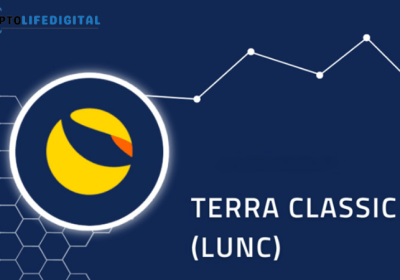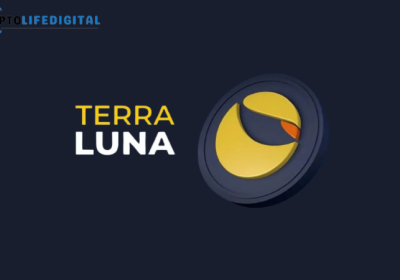IOG Reviews The Works Put In Place In Making Cardano A Secure, Scalable And Decentralized Blockchain And its Edge Ahead Of Bitcoin And Ethereum

IOG has taken the time to review the past efforts in the building of the Cardano blockchain on their official Twitter handle.
As Cardano is known for carefulness in writing code and conducting research to secure the integrity of the community and to save users from the multi-million loss as a result of their negligence.
In this premise, IOG remains committed to its approach as the fundamental research is paramount to laying firm, secure foundations for future growth for Cardano, and across the industry.
At the time of writing, according to IOG, there are 144 papers hosted in its research library and still hope to get more.
IOG has taken the time to review the past effort in nothing less than 5 research papers which have gone into making Cardano a secure, scalable, and decentralized blockchain.
It is good to know that the Cardano blockchain has been constructed on peer-reviewed research, a scientific methodology and engineering best practices as recently stated in a series of articles looking at some of the foundational research from IOG that has helped to build.
As stated by IOG, the first effort to make Cardano a better blockchain was securing groundwork for the secure, decentralized, and scalable ledger.
In the quest to make it a reality, IOG conducted research on Ouroboros, a provably secure proof-of-stake blockchain protocol in 2017. Ouroboros lies at the heart of how Cardano operates as it’s the blockchain’s PoS consensus protocol.
Ouroboros is a decentralized ledger protocol that is analyzed in the context of both Byzantine and rational behaviour. What makes the protocol unique is the combination of such design elements as stake, dynamic availability, trustless setting, and a reward-sharing incentive scheme.
Since its inception in 2017, advanced research has brought various Ouroboros protocol versions adding features and functionality to aid Cardano’s evolution.
The different versions include Ouroboros Classic (https://eprint.iacr.org/2016/889.pdf) Ouroboros Praos (https://eprint.iacr.org/2017/573.pdf) Ouroboros Genesis (https://eprint.iacr.org/2018/378.pdf) Ouroboros Chronos (https://eprint.iacr.org/2019/838.pdf).
It is good to know that community is paramount in Cardano. Given this, maximizing stakeholder participation in maintaining the network was the objective of 2020’s ‘Account Management in Proof of Stake Ledgers’.
Different papers were published to help maintain the community such The paper focused on how network users could delegate their stake to other participants.
Read Also: The First Phase Of Libdogecoin Is Now Released
The next paper ‘Reward Sharing Schemes for Stake Pools’, also published in 2020, discussed possible mechanisms to incentivize stakeholders for their activities.
Having set a secured background, IOG moved on to making research on smart contact support on Cardano which was dealt with in the second article posted on the official website. In this research, IOG went into Cardano’s innovative EUTXO model and how it aids in more efficient smart contracts.
Cardano Versus Bitcoin
Before IOG started the research, they considered Bitcoin being built on UTXO before they went on to research the extended version of UTXO. EUTXO model implemented on Cardano. A model that adds smart contract expressiveness to UTXO’s security and scalability. Having done this, they researched Plutus in the quest to make a functional programmable language available for the blockchain to maximize its operation.
Brilliant IOG proceeded to research how to make a web-based platform to build and run low-cost financial smart contracts. Then the idea of Marlowe came up.
Marlowe is a web-based platform to build and run low-cost financial smart contracts visually, without needing deep programming knowledge. It opens a range of use cases for non-programmers to execute straightforward and optimized contracts for financial transactions.
Having settled the area of Smart Contracts, IOG aims to research the Tokens, stablecoins, and fees.
Cardano Versus Ethereum
On Cardano, you can create your tokens simply, efficiently & at a low cost compared to other blockchains.
Ethereum is known for providing the ability to create various user-defined assets (tokens). However, Ethereum’s token standards are not directly supported by the ledger and require repetitive custom code. This adds a layer of complexity, extra cost, and inefficiency since token code is replicated and adapted rather than being part of the system itself. This leaves room for human error and can introduce bugs potentially leading to financial losses.
Having gotten Cardano to create its tokens at low fees unlike Ethereum, IOG went on implementation of a stablecoin on Cardano. This is a very useful feature for decentralized finance (DeFi) environments. Djed acts as an autonomous bank. It mints and burns stablecoins and reserve coins while keeping a reserve of base coins.
Interestingly, the benefits of Cardano’s multi-asset EUTXO model opened up another research avenue that led to Babel fees.
Babel fee is a mechanism that will allow for transaction fees to be paid in coins other than ada on Cardano.
The fourth and final part of the research series is based on the different ways to scale the blockchain. There are two main categories of scaling solutions: layer 1 and layer 2.
Layer 1 solutions include Pipelining, Input endorsers, and Tiered pricing
Pipelining improves block propagation times. The goal is for blocks to be propagated to peers within five seconds. Pipelining enables this by giving nodes the ability to pre-notify their downstream peers of an incoming block, enabling the peer to pre-fetch the new block body.
Input endorsers will also improve block propagation times and throughput. Input endorsers keep track of all submitted transactions and bundle these transactions into pre-constructed blocks.
Tiered pricing enables steady system performance in an agile way, and is especially relevant in preventing DoS attacks.
The layer 2 solutions include Proof-of-stake, Hydra: Fast Isomorphic State Channels, and Mithril: Stake-based Threshold Multisignatures.
In the quest to have the best PoS, IOG developed the Cardano EVM sidechain, which is currently in the alpha version on testnet. It will be compatible with Ethereum’s tools and libraries, allowing developers to create Solidity smart contracts, DApps, and ERC20 tokens on Cardano to gain from such benefits as cost-efficiency, scalability, and security.
Hydra simplifies off-chain protocol and smart contract development by directly adopting the layer 1 smart contract system, in this way allowing the same code to be used both on- and off-chain.
In securing greater scalability, there I need for streamlining the speed and efficiency of data synchronization between applications. Mithril addresses the complexity of critical operations that depend logarithmically on the number of these participants. Given the time it takes to validate a particular message, and the resource usage during the validation phase of chain synchronization, Mithril provides a solution that makes multi-signature aggregation fast and efficient without compromising security features.

Cryptolifedigital is a cryptocurrency blogger and analyst known for providing insightful analysis and commentary on the ever-changing digital currency landscape. With a keen eye for market trends and a deep understanding of blockchain technology, Cryptolifedigital helps readers navigate the complexities of the crypto world, making informed investment decisions. Whether you’re a seasoned investor or just starting out, Cryptolifedigital’s analysis offers valuable insights into the world of cryptocurrency.










